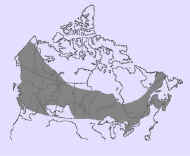The press and media are full today of predictions of a bumper year for grouse shooting, as the season opens. Plenty of healthy well-feathered birds are waiting in the heather to be startled into the sky by lines of beaters, and then shot as they fly, fast and low, over the waiting guns.
Hopefully, most will be cleanly killed. Those that are only wounded will be retrieved by pickers-up and despatched to end their suffering.
OneKind opposes sport shooting for a number of reasons. First, we just don’t get it - why is it fun to spend a day killing hundreds of living wild creatures? It’s a rhetorical question of course, and on one level we might feel we should just be tolerant and let others make their own ethical choices about how they spend their money and their free time.
But that’s before we consider the cost of grouse shooting. Not only the money that is expended, although that is considerable. Scottish Land and Estates put a “really good” day’s driven grouse shooting for eight or ten people, killing around 200 birds, at around £15,000, while a cheaper walked-up shoot without beaters, killing around 40 or 60 birds, would work out around £2,000 for the day.
Not only the environmental cost either, although many point to the unnatural effects on the environment when heather regularly burned so that the grouse can have a supply of young shoots to feed on – a practice said to threaten to release millions of tonnes of carbon locked into the peat bogs, not to mention the loss of wild animals trapped in the fires. Then there are the large quantities of lead shot discharged, the restrictions on public access to land (in England at least), and the scarring of landscape by roads built to allow shooters and keepers access to the moors.
No, the cost that concerns OneKind is the cost exacted of our native wildlife, sentient individuals every one of them. In addition to the thousands of birds directly shot, there is a huge toll of collateral harm to our wild creatures so that the grouse can thrive, fly up and be “harvested”. Our own field officer watched a gamekeeper beating trapped crows to death in a cage on a grouse estate, and I have literally lost count of the reports of rare, legally protected birds of prey such as buzzards and red kite being found in the vicinity of poisoned baits on grouse moors.
Iconic eagles are not safe either, with a ringed, named, satellite-tagged golden eagle poisoned in the Angus glens last November. Over the last six years, according to RSPB Scotland, another four eagles, a red kite and seven buzzards have been shot, poisoned or trapped on sporting estates in the Angus glens alone. In January 2013, the nest tree of a pair of white-tailed eagles was felled. In England, the hen harrier population is reduced to a fragile three breeding pairs, due to persecution.
The industry protests that these are the actions of a few rogue estates and individuals and that may be true, but the effects are still appalling. In numerical terms, raptor persecution pales into insignificance compared with the onslaught conducted against mammalian predators such as foxes, stoats and weasels and against hares that can pass ticks and disease to the grouse. Thousands of these animals, and plenty of non-target species such as badgers and otters, are caught in break-back traps or in the slow cruelty of snares.
A petition to the UK government calling for a ban on driven grouse shooting has already gathered 13,000 signatures. If that appears too drastic a step, there is undoubtedly a case for shoots to be licensed to provide sanctions for the most egregious wrongdoing, as the Scottish Raptor Study Groups and the RSPB have recommended. OneKind would support such a move, as soon as possible. And an alternative to banning shooting would be to educate our young people about the sentience of wild animals and to persuade landowners that, with nature tourism worth billions to the UK economy, alternative uses for our magnificent landscape are both feasible and desirable.
















